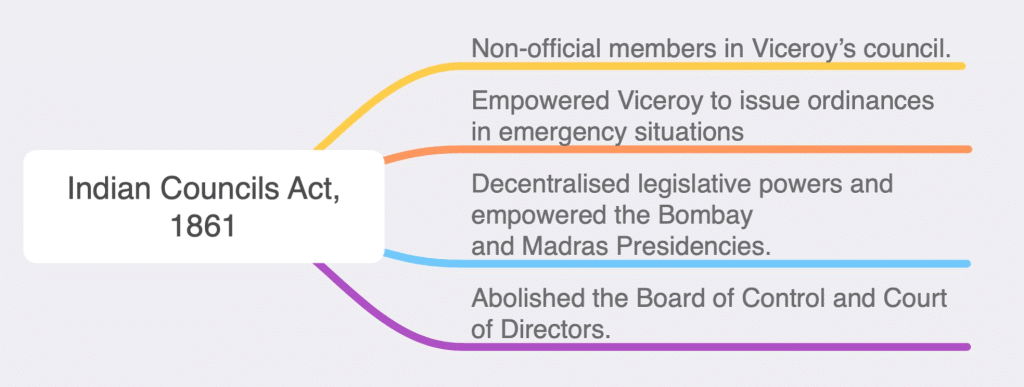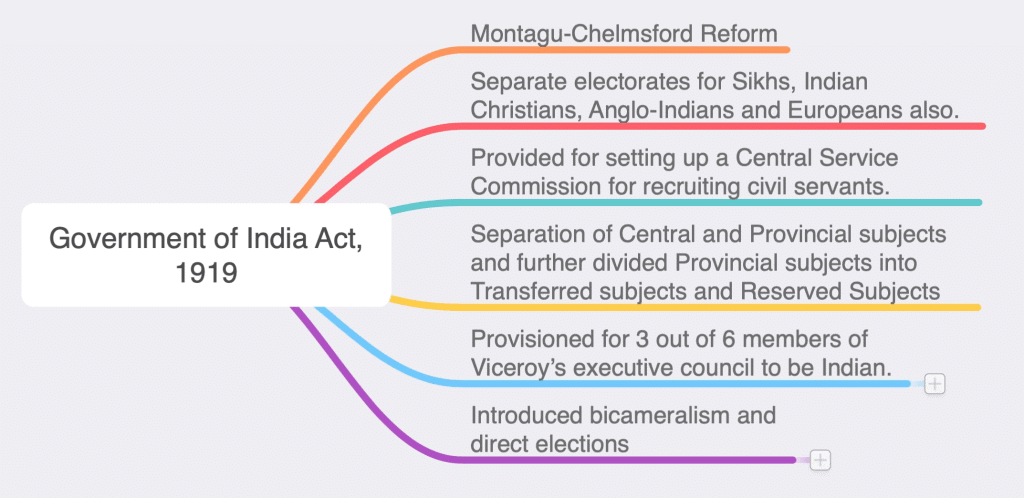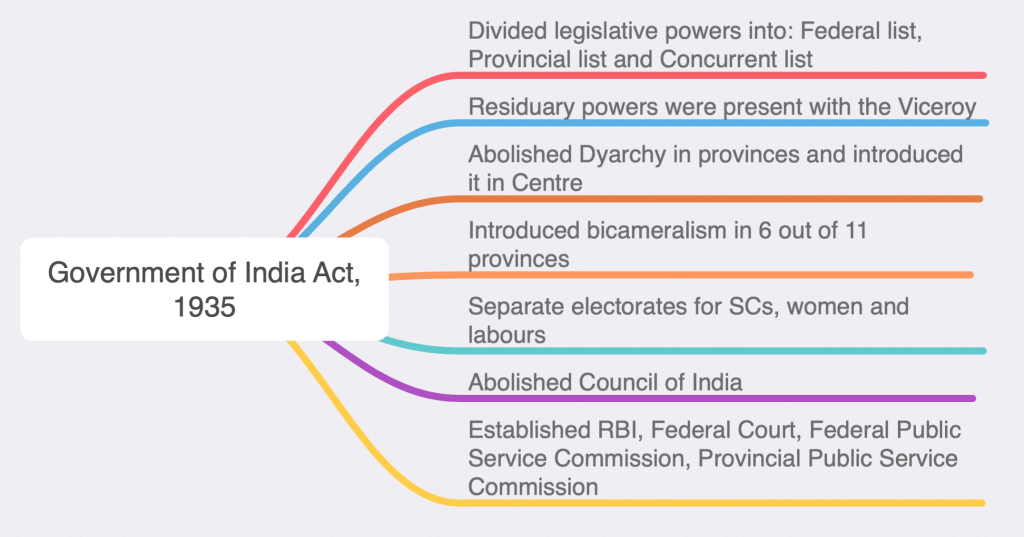UPSC Exam > UPSC Notes > Indian Polity for UPSC CSE > Mind Map: Historical Development of the Constitution of India
Mind Map: Historical Development of the Constitution of India | Indian Polity for UPSC CSE PDF Download
Historical Background

1. Regulating Act, 1773

2. Pitt’s India Act, 1784

3. Charter Act, 1813

4. Charter Act, 1833

5. Charter Act, 1853

6. Government of India Act, 1858

7. Indian Councils Act, 1861

8. Indian Councils Act, 1892

9. Indian Councils Act, 1909

10. Government of India Act, 1919

11. Government of India Act, 1935

The document Mind Map: Historical Development of the Constitution of India | Indian Polity for UPSC CSE is a part of the UPSC Course Indian Polity for UPSC CSE.
All you need of UPSC at this link: UPSC
|
150 videos|780 docs|202 tests
|
FAQs on Mind Map: Historical Development of the Constitution of India - Indian Polity for UPSC CSE
| 1. What is the history behind the Constitution of India? |  |
Ans. The Constitution of India was adopted on January 26, 1950. The drafting of the Constitution took place over two years, eleven months and eighteen days. The Constituent Assembly was formed to draft the Constitution of India on December 9, 1946, with Dr. B.R. Ambedkar as the Chairman of the Drafting Committee.
| 2. What are the main features of the Constitution of India? |  |
Ans. The Constitution of India is the longest written constitution in the world. It has 448 articles and 12 schedules, which are divided into 22 parts. Some of its main features include the Preamble, which reflects the objectives and the spirit of the Constitution, the Fundamental Rights, which ensure that every citizen has certain basic rights, the Directive Principles of State Policy, which guide the government in making laws and policies, and the system of checks and balances, which ensures that no one branch of government becomes too powerful.
| 3. What is the role of the Constituent Assembly in the development of the Constitution of India? |  |
Ans. The Constituent Assembly was formed to draft the Constitution of India. It was made up of 299 members, including Dr. B.R. Ambedkar, Sardar Patel, Jawaharlal Nehru, and Rajendra Prasad. The Assembly held its first meeting on December 9, 1946, and took 2 years, 11 months, and 18 days to draft the Constitution. The role of the Constituent Assembly was to create a framework for the Indian Constitution that would ensure democracy, equality, and justice for all citizens.
| 4. What is the significance of the Preamble in the Constitution of India? |  |
Ans. The Preamble is the introductory statement in the Constitution of India that reflects the objectives and the spirit of the Constitution. It outlines the fundamental values and principles that the Constitution seeks to uphold, such as justice, liberty, equality, and fraternity. The Preamble serves as a guiding force for the interpretation and implementation of the Constitution, and it is an essential part of the Constitution.
| 5. What is the importance of the Fundamental Rights in the Constitution of India? |  |
Ans. The Fundamental Rights are a set of basic rights that are guaranteed to all citizens of India. They are enshrined in Part III of the Constitution of India and include the right to equality, right to freedom, right against exploitation, right to freedom of religion, cultural and educational rights, and the right to constitutional remedies. These rights are essential for the protection of individual freedoms and the overall development of society. They ensure that every citizen has certain basic rights that cannot be taken away by the government or any other authority.
Related Searches






















